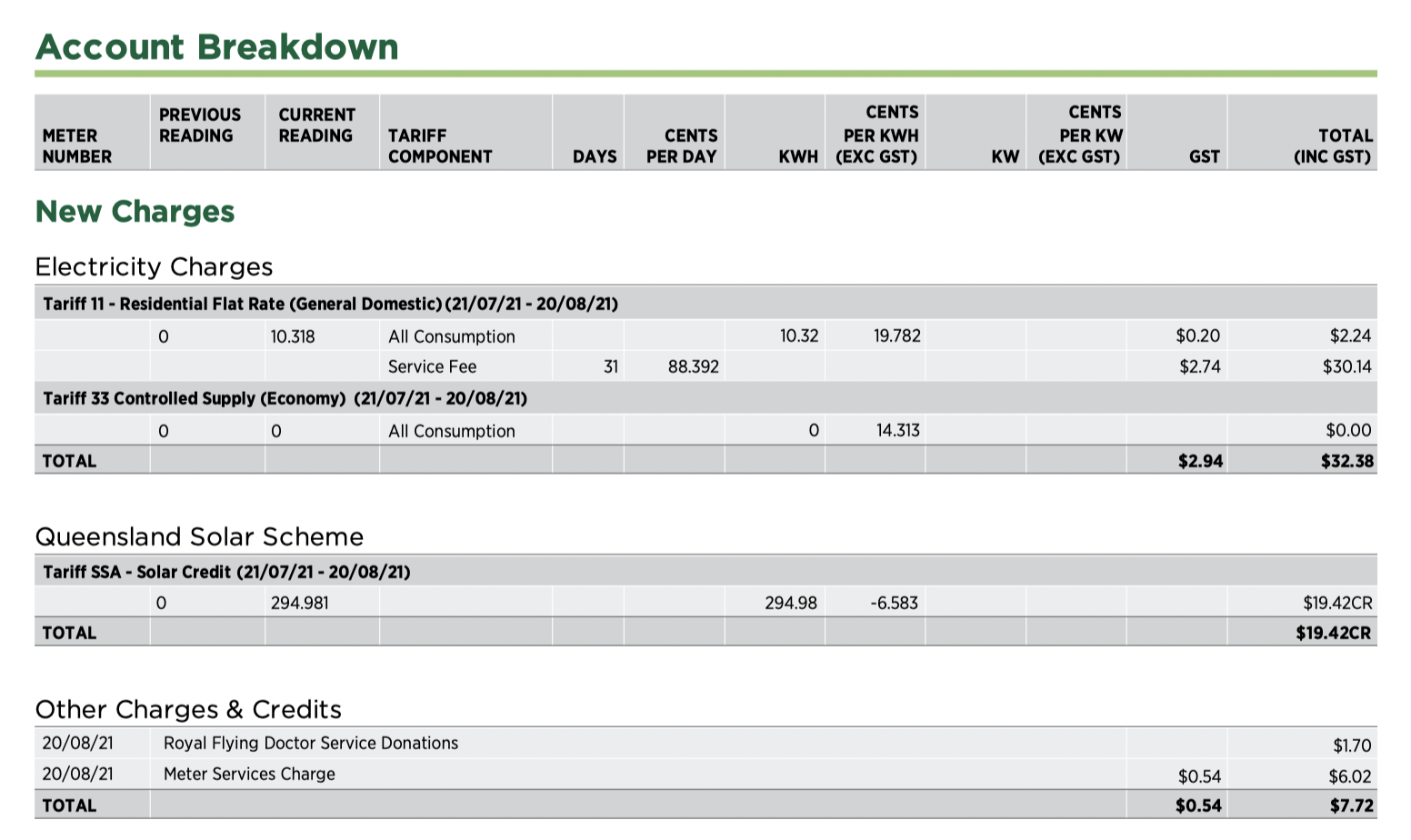EcoSmart News & Tips

Understanding your Power Bill
It’s that time again. You check your mailbox (or emails) and it’s there waiting for you.
Your power bill...
It’s summer in Central Queensland so you’ve been giving the air conditioners a run for their money. Usually your power bill sky rockets over the hot season. Between trying to keep the house cool and running the pool pump, you’re expecting another whopping bill. But…
Wow! That solar power you installed recently is really making a difference. Not only are you consuming more energy, but your bill is less than you expected!
You turn the page over to the breakdown of your consumption, curious to know how much power you have used and now you’re lost.
What is a tariff? What is the Queensland Solar Scheme? Why do I only have one tariff when there used to be two?
Understanding your power bill can be confusing. After switching to solar power you might notice a few changes, so we are here to help you through it.
The first thing you may notice – and one of the many great benefits of Solar Power – is the Queensland Solar Scheme. Offered at the current1 rate of 6.58c per kilowatt, any unused Solar Power you generate is fed back into the grid into your Feed-In Tariff (FIT). You then receive a credit which helps offset your grid usage charges.
For example.
- you have a 5kW system. In total over the month, your system generated 850kW (you had a few cloudy days.)
- Of that, your home used 630kW to run your appliances during the daytime.
- The remaining 220kW was sent back to Ergon and a credit provided on your bill at the applicable rate of 6.58c/kW.
Premium Feed In Tariff
If you’ve had solar for a few years, you may notice your FIT is higher than the current rate. There is a Premium FIT of 44c/kW that was offered to customers who applied before July 10th, 2012 and maintain eligibility. This tariff is closed to new solar customers and will end on the 1st July, 2028; in which case you will then move to the applicable rate at the time.
Note: For existing customers on the Premium FIT, an increase to your system size will result in you losing the Premium tariff so this is something to consider and be aware of if looking to upgrade your Solar Power System.
Another thing to be conscious of with solar power is that, unless you have battery storage, your solar system only produces energy throughout daylight hours. Your night-time usage (and any over usage if you are using in excess of the energy produced by your system) is drawn from the grid and charged at the applicable rate by your energy provider. This rate is often much higher than your FIT so we recommend running appliances that you can throughout the day to utilise as much of the free energy you are producing.
TIP: Setting appliances such as dishwashers, washing machines and dryers on timers (if you are not home during daylight hours to set them), will reduce your night-time usage.
How Do I know Which Rate I Am On?
You can see which rate you are receiving on page 2 of your power bill. You may see 2 rates here; this means you have 2 tariffs. A tariff is the rate in which you are billed by Ergon Retail.
You’ll likely see you have Tariff 11 – this is the primary tariff for general household use and is available 24/7.
You may also see you have Tariff 31 or 33 – these are for controlled loads such as hot water systems and pools. Power is available for a limited time each day on these tariffs; however, they have a lower rate.
For those that don’t have Tariff 31 or 33, your electric hot water system will be running off Tariff 11. Some people opt to do this after installing Solar Power with a Hot Water Timer2. A Hot Water Timer allows your hot water system to heat during pre-determined hours throughout the day – using your Solar Power rather than the grid. This is ideal for smaller homes but if you are expecting extra visitors and an increase in your hot water demands, the timer can easily be switched off and back on again when needed. When the timer is turned off, your hot water system will run off Tariff 11.
For more information about the Tariffs and your energy bill, we recommend contact your energy retailer to discuss.
If you’d like to find out more about Solar Power and how it can help reduce your power bill, we’d love to have a chat with you.
1 Current rate as of Jan 2022.
2 A Hot Water Timer must be installed by a qualified electrician.
